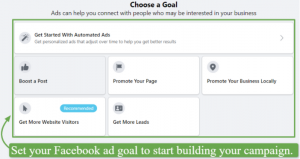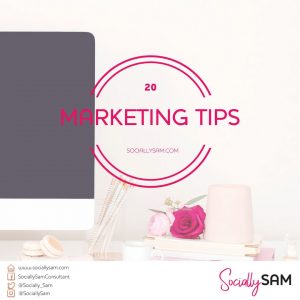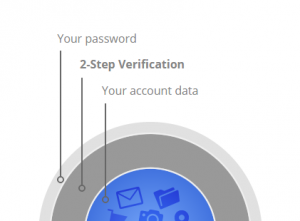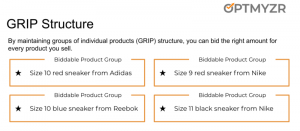 I often feel that I work for my inbox, not the other way around. Many of the customer success managers I speak with have a similar experience. The inbox is full of customer issues, customer information requests, product updates, new customer onboarding requests, sales meetings, ….. it is all important.
I often feel that I work for my inbox, not the other way around. Many of the customer success managers I speak with have a similar experience. The inbox is full of customer issues, customer information requests, product updates, new customer onboarding requests, sales meetings, ….. it is all important.
The problem with the Inbox is that it tends to be first-in, first-out time management system. The first email, at the top of the inbox, is the one that gets attention first. There may be more important issues from more important customers further down the inbox, but our inboxes don’t help us find those.
How can we focus our attention on the right customer, at the right time?
- Prioritize by Segment and Tier – The first place to start building a focusing algorithm is with customer segments and product tiers. Different segments have very different values and receive different levels of service. In much the same way, different product tiers naturally need different levels of care. For example, the ‘Enterprise’ tier is typically more complex and, as a result, more difficult to implement. Enterprise customer both need and pay for higher levels of service.
- Prioritize by Customer Potential – Segment and tier are a good place to start. However, the potential size of a customer is equally important. A new customer may start with a smaller version of your product, but they may have the potential to grow into a much higher value product set. It’s in your interest to give these customers the highest possible care.
- Prioritize Health Score (and other risk indicators) – The next factor to consider is the health of the customer. For example, a relatively minor product bug might be a low priority issue for a relatively healthy customer. However, if that customer already has a low (‘red’) health score, a minor problem might just be enough to have then give up.
- Prioritize Lifecycle Stages – A very similar logic can apply to the customer’s lifecycle stage. A product issue that is a minor concern for a mature customer in the 8th month of a 24-month contract, might well be a serious issue during the onboarding phase, or 30-days before contract renewal.
- Prioritize Issues – Not every issue, demands the same priority level or attention. If a customer encounters a product bug, but the same customer hasn’t used a certain key feature yet, the product bug will be a relatively minor priority.
- Prioritize Outcomes – A customer has success factors that defines the outcomes they want to produce in a particular stage in their journey.
- Prioritize Opportunities – A customer may be doing very well every month – quickly adoption the most valuable feature sets and producing a high levels of outcomes – may become an opportunity to upsell them to a new product tier, and to cross-sell them some new capabilities. If we only focus on negatives (complaints, low health scores) we will miss these opportunities to create and realize more value.
Dynamic Priorities
This sounds like a lot of work. How can you do this accurately? In real-time? Without spending all your time on prioritization? The answer is Dynamic Priorities. The ideal solution is a system that is purpose-built for the customer success business process. It should combine many different types of customer data – CRM, email, support tickets, billing, user activity, outcomes, lifecycle stage with flexible rules and automation to provide you with Dynamic Priorities than change as the data changes. This gives you a dynamic priority that is always accurate and calculated automatically.
For example, a simple, and traditional way to get started with dynamic priorities is to use account tier and the health score to set the priority dynamically. Here are some typical rules for this scenario:
- Tier 3 customer has a Low priority by default. When the health score turns red, the priority is increased to medium.
- Tier 2 customer has a Medium priority by default. When the health score turns red, the priority is increased to high.
- Tier 1 customer has a High priority by default. When the health score turns red, the priority is increased to critical.
- Critical accounts get attention first.
A more sophisticated example is to include customer context in the calculation of the dynamic priority. Examples of customer context include Growth Potential and Lifecycle Stage.
Tier2 + On-boarding + High Growth Potential + Red Health Score = Critical Priority
This type of dynamic priority allows for very precise definitions of priority that ensures that the CSM is focussing on the right customer at the right time for the right reason. This is a powerful way to improve productivity and performance.
The ultimate goal is to use the customer outcomes to shape the dynamic priority calculation. The primary function of customer success is to ensure that the customer is producing the outcomes they expected by using the product. For example, leads are a typical outcome for a marketing automation application. Using outcomes to calculate the dynamic priority create an opportunity to create extra value for the customer. For example,
Low Lead Count + Tier1 Account + Renewing Soon = Critical Priority
This allows the CSM to proactively reach out to the customer and help them understand why their outcome levels are below their goal, and to create a plan to improve their performance. This is an example of proactive, outcome-focussed customer success. It is a long way from letting your inbox focus your attention.
If you’d like to see Dynamic Priorities in action, request a demo of Amity here.
Business & Finance Articles on Business 2 Community(90)









